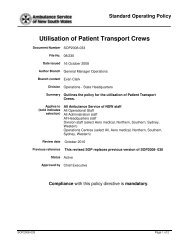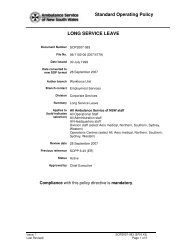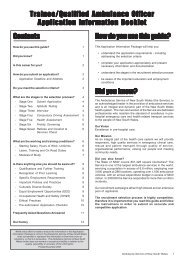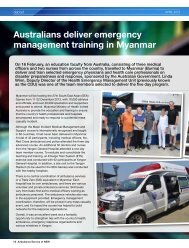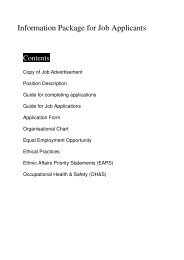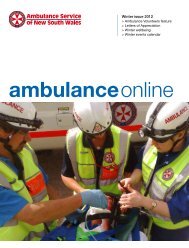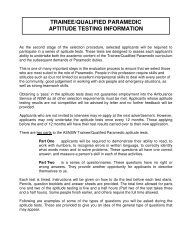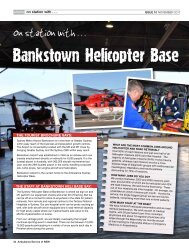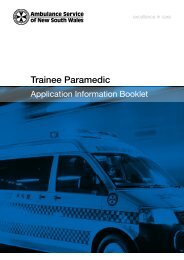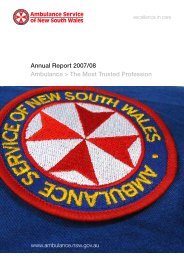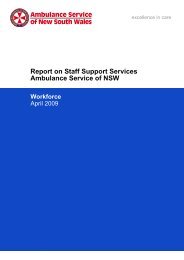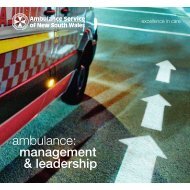atsb final report released 16 may 2013 - Ambulance Service of NSW
atsb final report released 16 may 2013 - Ambulance Service of NSW
atsb final report released 16 may 2013 - Ambulance Service of NSW
Create successful ePaper yourself
Turn your PDF publications into a flip-book with our unique Google optimized e-Paper software.
paramedics, so the pilot elected to fly overhead to attempt radio contact andascertain if they were ready to be extracted. The pilot started the helicopter at1951 and, shortly after, received a call on the helicopter’s telephone from anotherSCAT paramedic. This paramedic advised that he had been assigned as a groundresponse and that he was en route to Bridal Veil Falls in the company <strong>of</strong> anambulance supervisor.Following that phone call, the pilot flew the helicopter overhead the waterfall andcontacted the duty paramedic at 1957 via radio. The paramedic <strong>report</strong>ed that he hadjust accessed the patient and that he would require another 15 to 20 minutes toprepare him to be winched out. In response, the pilot advised that he would fly toWollongong Airport, refuel the helicopter and return to conduct the winch. Thehelicopter landed at Wollongong Airport at 2005 and was hot refuelled 9 beforedeparting again at <strong>2013</strong>.The injured canyoner recalled that when the duty paramedic arrived on the ledge,the paramedic assessed his injuries, provided him with pain medication and advisedhim that the fading daylight meant they had limited time to prepare to be winchedfrom the rock ledge. The paramedic then assisted the canyoner to move into thewinching position before placing him in a rescue strop (Figure 5) and fittingprotective equipment, including a pair <strong>of</strong> goggles that obscured his peripheralvision. The canyoner did not recall the paramedic describing how the winch was tobe conducted and, due to his restricted vision, was unable to observe theparamedic’s preparation.Figure 5: Rescue stropSource: ATSBDuring the return flight to the waterfall, the flight crew received a satellitetelephone call from the support paramedic requesting an update on the mission ashe had been unable to communicate with the duty paramedic from the time that hehad commenced abseiling down to the patient. In addition, from his position at thetop <strong>of</strong> the waterfall, the support paramedic was unable to see the rock ledge below.The pilot provided an update to the support paramedic and advised that they werereturning to conduct the winch.Approaching the waterfall, the flight crew prepared the aircraft for winching and, inrecognition that last light was approaching, the pilot activated and positioned thehelicopter’s SX-<strong>16</strong> Nightsun searchlight (Nightsun) and a secondary searchlight forpossible use during the hover and winch (see the section titled Aircraft9The refuelling <strong>of</strong> a helicopter with its engine or engines running. That activity is permitted inaccordance with Civil Aviation Order (CAO) 20.10.- 6 -



